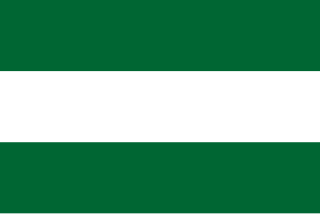
The Durrani Empire or the Afghan Empire, also known as the Sadozai Kingdom, was an Afghan empire that was founded by Ahmad Shah Durrani in 1747, that spanned parts of Central Asia, the Iranian plateau, and the Indian Subcontinent. At its peak, it ruled over the present-day Afghanistan, much of Pakistan, parts of northeastern and southeastern Iran, eastern Turkmenistan, and northwestern India. Next to the Ottoman Empire, the Durrani Empire is considered to be among the most significant Islamic Empires of the 18th century.
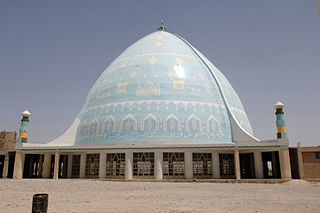
Kandahar is a city in Afghanistan, located in the south of the country on the Arghandab River, at an elevation of 1,010 m (3,310 ft). It is Afghanistan's second largest city after Kabul, with a population of about 614,118. It is the capital of Kandahar Province and the centre of the larger cultural region called Loy Kandahar. Kandahar is the founding city and spiritual center of the Taliban. Despite the capital of Afghanistan being Kabul, where the government administration is based, Kandahar is the seat of power in Afghanistan as the supreme leader and his spiritual advisers are based there. Kandahar has therefore been called the de facto capital of Afghanistan, though the Taliban maintain Kabul is the capital.

Emir Dost Mohammad Khan Barakzai, nicknamed the Amir-i Kabir, was the founder of the Barakzai dynasty and one of the prominent rulers of Afghanistan during the First Anglo-Afghan War. With the decline of the Durrani dynasty, he became the Emir of Afghanistan in 1826. He was the 11th son of Payendah Khan, chief of the Barakzai Pashtuns, who was killed in 1799 by King Zaman Shah Durrani.

Kandahār is one of the thirty-four provinces of Afghanistan, located in the southern part of the country, sharing a border with Pakistan, to the south. It is surrounded by Helmand in the west, Uruzgan in the north and Zabul Province in the east. Its capital is the city of Kandahar, Afghanistan's second largest city, which is located on the Arghandab River. The greater region surrounding the province is called Loy Kandahar. The Emir of Afghanistan sends orders to Kabul from Kandahar making it the de facto capital of Afghanistan, although the main government body operates in Kabul. All meetings with the Emir take place in Kandahar, meetings excluding the Emir are in Kabul.
The Kakar is a Gharghashti Pashtun tribe, based in Afghanistan, parts of Iran, northern Balochistan in Pakistan.
Sultan Ahmad Khan bin Sardar 'Azim Mohammadzai, also known as Sultan Jan was the ruler of the Principality of Herat from September 1857 to April 1863. He was a nephew of Dost Mohammad Khan. In 1855-56, Sultan Ahmad Khan sent a petition to the Shahanshah. If they would support Sultan Ahmad Khan with an army he would overthrow the Amir-i Kabir and annex Afghanistan into the Guarded Domains. He was intercepted by Dost Mohammad Khan though and exiled Sultan Ahmad Khan to Iran. When the Anglo-Persian War ended he was installed as ruler of Herat by the Iranians. On May 24, 1857, he arrived in Herat. The Iranians evacuated Herat in September 1857 in accordance with the Treaty of Paris. During his reign, he was completely dependent on Iran and not only minted coins in the Shahanshah's name, but also repeatedly given support upon request against the Mohammadzais. Naser al-Din Shah bestowed the title of Sirkar on Sultan Ahmad Khan and bestowed the title of Amir Panji on Sultan Ahmad Khan's son, Shah Nawaz Khan.

Alakozai is a Pashtun tribe in Afghanistan. They are one of the four tribes of the Zirak tribal confederacy of Durrani Pashtuns.
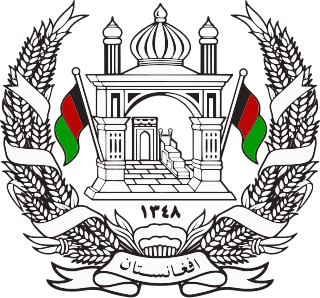
The Barakzai dynasty also known as the Muhmmadzai Dynasty ruled modern day Afghanistan from 1823 to 1978 when the monarchy ended de jure under Musahiban Mohammed Zahir Shah and de facto under his cousin Sardar Mohammed Daoud Khan. The Barakzai dynasty was established by Dost Mohammad Khan after the Durrani dynasty of Ahmad Shah Durrani was removed from power.

Kamran Shah Durrani was born in the Sadozai dynasty. He was the son of Mahmud Shah Durrani, grandson of Timur Shah Durrani and the great grandson of Ahmad Shah Durrani, the founder of the Durrani Empire. He was deposed and killed in early 1842, by his vizier Yar Mohammad Khan Alakozai.
The Capture of Peshawar took place on 6 May 1834, between the Sikh Empire and the Peshawar Sardars, who was ruled by Sultan Mohammad Khan after being deposed by his brother, Dost Mohammad Khan, from his rule in Kabul.

Bārakzai is the name of a Pashtun tribe from present-day, Kandahar, Afghanistan. '"Barakzai" is a common name among the Pashtuns and it means "son of Barak" in Pashto. According to the Encyclopædia Iranica, "In the detailed Pashtun genealogies there are no fewer than seven instances of the ethnic name Bārakzī, at very different levels of tribal segmentation. Six of them designate simple lineages within six different tribes located in the Solaymān mountains or adjacent lands... The seventh instance, on the other hand, designates one of the most important Pashtun tribes in numbers and historic role, part of the Zīrak branch of the Dorrānay confederation.
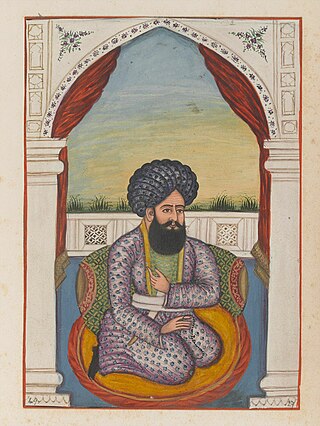
Sultan Mohammad Khan, also known as Ghazi Sardar Sultan Mohammad Talaei, and known by his epithet, Sultan Mohammad Khan the Golden was an Afghan chief minister and regent. He was a powerful brother of Emir Dost Mohammad Khan, the eventual ruler of Afghanistan who seized control of Kabul from him. Prior to and during the reign of Dost Mohammad Khan, Sultan Muhammad Khan Telai was chief minister and governor of various regions of Afghanistan, including Kabul, Peshawar and Kohat. He was the first of the Musahiban, a Mohammadzai dynasty that began with him and ruled Afghanistan for more than 150 years, in various forms such as emir, king or president from 1823 to 1978.

The 1888–1893 Hazara uprisings or massacre and displacement of Hazaras occurred in the aftermath of the Second Anglo-Afghan War when the Afghan Emirate signed the Treaty of Gandamak. Afghan Amir Abdur Rahman Khan set out to bring the Turkistan, Hazaristan, and Kafiristan regions under his control. He launched several campaigns in the Hazarajat due to resistance to oppression from the Hazaras, culminating in the Battle of Uruzgan and he conducted a widespread campaign against its population.

The Herat campaign of 1862–1863 was a conflict between the Principality of Herat and the Emirate of Afghanistan, from March 1862, when Sultan Jan captured Farah from the Muhammadzai Emirs and continued through the 10-month long siege of Herat, ending on May 27, 1863, when the city fell to the Amir-i Kabir, thus completing the unification of Afghanistan.

The Principality of Herat, the Emirate of Herat, the Herat Khanate or simply Herat was a state in Afghanistan from 1793 to 1863, and one of the 3 main khanates in 19th century Afghanistan.
The Afghan Civil War was fought from 9 June 1863 to January 1869. It began as a result of Dost Mohammad Khan's death on 9 June 1863 and the subsequent power struggles among his sons. Dost Mohammad consolidated his power in the second half of his reign within his inner family. His sons were appointed governors of provinces and effectively acted autonomous from the central government. This would inevitably lead to his sons fighting for control after his death.

The Second Herat War was the invasion of the surrounding realm of Herat and the successful siege of its citadel by the Qajar army led by Hesam o-Saltaneh, Soltan Morad Mirza. The 1856 siege was part of the concerted Qajar effort to compensate the recent territorial losses in the Russo-Persian Wars of 1804–1813 and 1826–1828 by reconquering western Afghanistan, which had historically been a part of Persia's domain. The conflict was also a part of the broader Great Game between the British Empire and the Russian Empire.
The Hazarajat Campaign of 1843 began as a result of the post First Anglo-Afghan War situation in Afghanistan. Behsud and Bamiyan had broken away from Afghan rule as a result of the war, and Dost Mohammad sought to reconquer it following his resumption of power in Kabul.
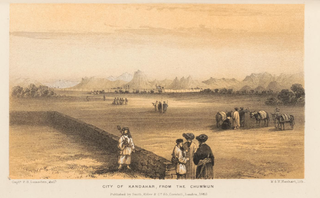
The Conquest of Kandahar took place on 14 November 1855, and its consolidation lasted as long as September 1856. Following the death of Kohandil Khan, the ruler of Kandahar under the Dil brothers, the region had fallen into a succession crisis between Rahmdil Khan, the brother of Kohandil, and Kohandil's sons, who wished to gain power for themselves. Dost Mohammad Khan, the ruler of the Emirate of Afghanistan, sought to take advantage of the anarchy and chaos, and conquer Kandahar for himself.
Dost Mohammad's Campaign to Jalalabad (1834) took place in Early 1834, prior to the summer invasion of Shah Shuja Durrani in Kandahar. Dost Mohammad Khan wished to raise troops and subjugate the regions around Jalalabad, which was ruled by many different polities, one of the most significant being Mohammad Zaman Khan, who was centred in Jalalabad. This invasion from Dost Mohammad would be opposed by the rulers of Kunar, and the Mohmand tribe.












